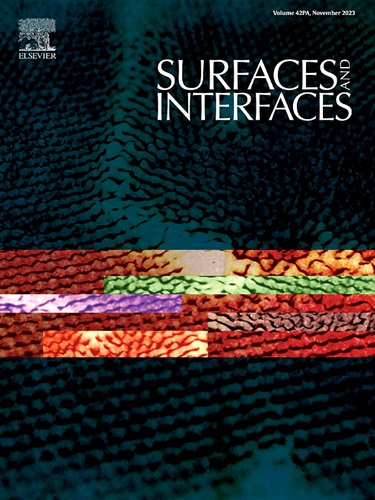葡萄糖基 OPE 改性哈洛来石纳米管及其作为细菌感染光疗剂的潜力
IF 5.7
2区 材料科学
Q2 CHEMISTRY, PHYSICAL
引用次数: 0
摘要
本文章由计算机程序翻译,如有差异,请以英文原文为准。

Glucosyl OPE-modified halloysite nanotubes and their potential as phototherapy agents for bacterial infections
Bacterial infections pose a significant health threat, worsened by the growing issue of antibiotic resistance and biofilm formation. Phototherapies, particularly photodynamic therapy (PDT), offer promising non-invasive alternatives due to their high efficacy and minimal side effects. These therapies utilize photosensitizers (PSs), which, when activated by light, generate reactive oxygen species (ROS) that lead to bacterial cell death. Recent advancements have focused on enhancing PDT by integrating PSs with nanomaterials. Halloysite nanotubes (HNTs), a natural clay mineral, are of particular interest due to their unique properties, including intrinsic antibacterial activity and the ability to integrate into bacterial biofilms. By combining HNTs with photosensitizers, we aimed to improve treatment efficacy. In this study, we synthesized a novel glucosyl OPE derivative and covalently attached it to HNTs, forming the composite HNTs@Glu-OPE. This system was thoroughly characterized, and its ROS generation capabilities were tested under 365 nm light irradiation using uric acid as a probe. Loaded with vancomycin, HNTs@Glu-OPE represents a multifunctional approach to PDT, enhancing both the delivery and effectiveness of therapeutic agents against resistant bacterial strains.
求助全文
通过发布文献求助,成功后即可免费获取论文全文。
去求助
来源期刊

Surfaces and Interfaces
Chemistry-General Chemistry
CiteScore
8.50
自引率
6.50%
发文量
753
审稿时长
35 days
期刊介绍:
The aim of the journal is to provide a respectful outlet for ''sound science'' papers in all research areas on surfaces and interfaces. We define sound science papers as papers that describe new and well-executed research, but that do not necessarily provide brand new insights or are merely a description of research results.
Surfaces and Interfaces publishes research papers in all fields of surface science which may not always find the right home on first submission to our Elsevier sister journals (Applied Surface, Surface and Coatings Technology, Thin Solid Films)
 求助内容:
求助内容: 应助结果提醒方式:
应助结果提醒方式:


